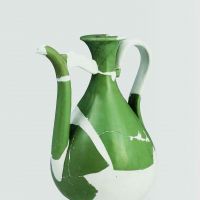Longquan celadon, produced at kilns in Lishui Prefecture in China's Zhejiang Province, has a history going back more than 1,600 years. Large quantities have long been exported across Asia, and it has been popular in Japan since it was introduced during the Kamakura Period (1192-1333).
In 2006, a large-scale excavation at Longquan kilns uncovered fragments of celadon in a rare jade-green color. The findings indicated that those particular kilns once produced celadon ware for the Chinese court of the early Ming Dynasty (1368-1644) — a discovery that challenged the popular belief that Longquan kilns were reducing their production around that time.
The exhibition showcases around 80 items found during the 2006 excavation — some of the most important archeological find in the history of Chinese ceramics; till Dec. 25.
The Museum of Oriental Ceramics, Osaka; (06) 6223-0055; 1-1-26 Nakanoshima, Kita-ku, Osaka; 5-min. walk from Yodoyabashi Station, Midosuji or Keihan Honsen lines. 9:30 a.m.-5 p.m. (Dec. 14-25 till 7 p.m.). ¥800. Closed Mon. www.moco.or.jp.

















With your current subscription plan you can comment on stories. However, before writing your first comment, please create a display name in the Profile section of your subscriber account page.